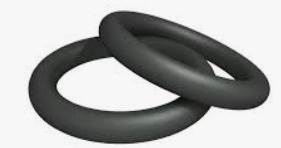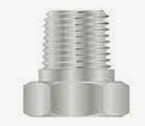Fluid transfer is the lifeblood of various industries, from plumbing systems in our homes to complex applications in aerospace engineering. Achieving efficient, leak-free connections between pipes and tubing is paramount for the success of these systems.
Among the unsung heroes of fluid transfer are pipe to tubing adapters. These unassuming components bridge the gap between different systems, ensuring the seamless flow of liquids and gases. In this article, we’ll delve into the world of pipe to tubing adapters, exploring their types, materials, applications, and the crucial role they play in maintaining the integrity of fluid transfer systems.
Pipe to Tubing Adapters Unveiled
Pipe to tubing adapters, also known as fittings, are connectors that facilitate the transition between pipes and tubing. They are designed to provide a secure, leak-free connection, ensuring the uninterrupted flow of fluids.
Types of Adapters
Pipe to tubing adapters come in various configurations to suit different applications. Let’s explore some common types:
1. Compression Fittings
Compression fittings create a seal by compressing a ferrule onto the tubing. They are popular for their ease of installation and versatility.
2. Push-to-Connect Fittings
Push-to-connect fittings allow tubing to be pushed into the adapter, where it is securely held in place by gripping teeth. They are known for their user-friendly design.
3. Flare Fittings
Flare fittings feature a flared end on the tubing that mates with a conical seat in the adapter. This creates a tight seal, making flare fittings ideal for high-pressure applications.
How Do You Connect a Pipe to a Tube?
Connecting a pipe to a tube requires precision and attention to detail. Here’s a step-by-step guide to achieving a leak-free connection:
➡️ Prepare the Surfaces: Ensure both the pipe and tube ends are clean, smooth, and free of debris or corrosion.
➡️ Select the Right Adapter: Choose an adapter that matches the sizes and types of the pipe and tube, ensuring compatibility.
➡️ Apply Sealant: Use an appropriate sealant or thread tape on threaded adapters to prevent leaks.
➡️ Secure the Connection: Tighten the connection using the appropriate tools. Avoid over-tightening, which could damage the components.
➡️ Test for Leaks: Conduct a pressure test to ensure the connection is secure and leak-free.
Materials and Their Impact
A. Brass Adapters
Brass pipe to tubing adapters are valued for their corrosion resistance and durability. They are often used in plumbing systems and other applications where exposure to moisture is a concern.
B. Stainless Steel Adapters
Stainless steel adapters combine strength with resistance to corrosion, making them suitable for a wide range of applications, including those involving aggressive fluids.
C. Plastic Adapters
Plastic adapters are lightweight and cost-effective. They are commonly used in situations where the pressure and temperature requirements are not extreme.
Understanding the Connection
A. Sealing Mechanisms
To ensure leak-free connections, adapters use different sealing mechanisms:
1. O-Ring Seals
O-ring seals provide a reliable method of preventing leaks. These elastomeric rings create a secure seal when pressure is applied, making them a popular choice for adapters.
2. Tapered Threads
Tapered threads rely on the precision of threaded connections to prevent leaks. When properly tightened, they create a strong, dependable seal.
B. Sizing and Compatibility
Selecting the right size of adapter is crucial to ensure a snug and secure fit. Adapters come in various sizes and thread types, so matching them with the tubing and pipe is essential.
Applications Across Industries
A. Plumbing Systems
In residential and commercial plumbing systems, pipe to tubing adapters are used to connect pipes and flexible tubing, ensuring a reliable supply of water and gas.
B. Automotive and Aerospace
In automotive and aerospace engineering, these adapters play a pivotal role in connecting various fluid-carrying components, such as brake lines and fuel systems.
C. Industrial Manufacturing
From food production to chemical processing, industrial manufacturing relies on the seamless connection provided by pipe to tubing adapters.
Benefits of Pipe to Tubing Adapters
A. Leak Prevention
The primary function of pipe to tubing adapters is to prevent leaks. Hydraulic systems are unforgiving when it comes to leaks, as they can lead to catastrophic failures and downtime.
B. Secure Connections
These adapters ensure secure connections between hydraulic components, enhancing the overall efficiency and reliability of the system.
C. Durability and Longevity
Their robust construction and resistance to high pressure make pipe to tubing adapters exceptionally durable, resulting in a longer service life.
D. Easy Installation
Despite their critical role, pipe to tubing adapters are easy to install, simplifying maintenance and replacement procedures.
How to Choose the Right Adapter
A. Compatibility
Selecting a compatible pipe to tubing adapter for your hydraulic system is crucial. Ensuring that it fits seamlessly with other components is vital for efficient operation.
B. Sizing and Thread Type
Pipe to tubing adapters come in various sizes and thread types. Choosing the right size and thread ensures a snug fit.
C. Material Selection
Consider the material of the adapter to align with the environmental conditions and pressure requirements of your specific application.
Installation Guidelines
A. Proper Torque
Proper torque during installation is crucial to prevent under-tightening or over-tightening, both of which can lead to connector failure.
B. Lubrication
Using appropriate lubrication during installation reduces friction and ensures a secure connection.
C. Inspection and Maintenance
Regularly inspecting and maintaining pipe to tubing adapters is essential to detect wear and tear, leaks, or potential issues.
Safety Considerations
A. Avoiding Pressure Surges
Proper system design and the use of pipe to tubing adapters that can withstand pressure surges are essential for safety.
B. Burst Protection
Pipe to tubing adapters play a role in preventing bursts in high-pressure systems, ensuring safety.
C. Regular Inspections
Conducting routine inspections of pipe to tubing adapters and the entire hydraulic system is a safety measure to identify potential problems.
Compliance with Industry Standards
A. ASTM Standards
The American Society for Testing and Materials (ASTM) has established standards for hydraulic systems and components, ensuring quality and safety.
B. ISO Certifications
The International Organization for Standardization (ISO) offers certifications that indicate adherence to international quality standards.
Conclusion
A. The Evolution of Fluid Transfer
As technology evolves, the role of pipe to tubing adapters remains pivotal in modern industry, adapting to the changing needs and challenges of the 21st century.
B. Pipe to Tubing Adapters: Navigating the Connection
Pipe to tubing adapters may be small in size, but they are monumental in their impact, ensuring hydraulic systems run smoothly and safely.
Post time: Nov-23-2023



